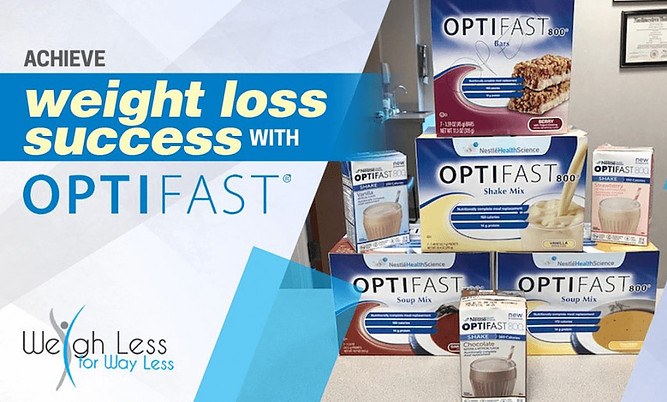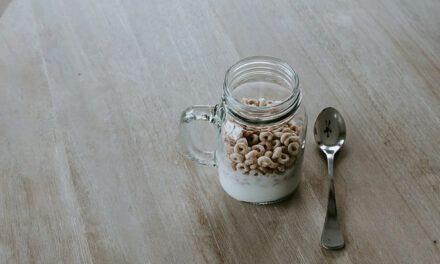This article looks into Optifast and Diabetes and many questions related to using Optifast as a person with diabetes. For example, Is Optifast Safe For Diabetics? When should you use the Optifast Weight Management Program? And, when you shouldn’t? And, many more…
Let’s begin…
Obesity and being overweight is one thing that increases the risk of metabolic conditions such as type 2 diabetes. Obesity can cause insulin insensitivity.
Research suggests obese people are 80 times more likely to develop type 2 diabetes than those with a BMI of less than 22.
If you have type 2 diabetes, you sure know that this is one condition that can result in serious complications and health conditions such as stroke, hypertension, and heart attack as the illness progresses. It can damage the blood vessels, result to the development of leg ulcers and even affect eyesight.
Aside from taking your meds, eating healthy, and exercising, you can regulate your blood sugar level and manage your condition to lose weight. Weight loss can help to put diabetes in remission.
To make weight loss easier and faster, you can join a weight management program. There are lots of weight management programs out there. But, the issue most of them is “which of them is really effective and which of them will give you the desired result?”
Optifast is a scientifically designed weight loss program that has been proven to be effective in weight management. Recommended by medical practitioners and backed with a lot of research.
However, there are many questions to consider before opt-in to Optifast. Especially if you are with diabetes, and those questions and answers will be covered in this guide.
Before anything, let’s find out what Optifast is…
What is Optifast?
Optifast is a weight loss/weight management program scientifically designed and offered by Nestle Health Sciences brand for people who are overweight or obese and those with a BMI of 30 and above.
It is a medically supervised weight loss program that uses nutritionally balanced but very low-calorie diet (VLCD) products.
This is how their marketing pitch sounds like…
Optifast is intended to help patients in the following situations.
- People who are at risk of developing weight-related diseases
- Based on medical advice
Those who are medically required to lose weight to reduce the risk or improve their conditions.
- To shed some pounds off their body weight
It is also good for those who want to maintain healthy body weight.
- This program involves the use of Meal replacement strategies
Those involve using any of the Optifast products – Optifast shakes, soups, desserts, and bars as a meal replacement or total diet replacement.
- Medical supervision and monitoring
This involves thorough medical examination and tests to ascertain the risk factors. And based on the health status and weight loss goals of the patient, a personalized weight loss plan is prepared for the patient.
- Personalized support and lifestyle education
This helps patients to relearn how to approach food and take healthy decisions, particularly when it comes to their diet.
- Counselling and advice
A one-on-one counseling session with a medical team and a group support system that consists of both current and past Optifast participants.
The Phases Of Optifast Diet Program
Optifast program consists of 3 stages, meant to help the participant to quickly and effectively lose weight.
The program encourages the participants to change their eating habits and relationship with food during this period. Each of the participants is given a medical evaluation and a personalized program tailored to meet their individual needs.
Optifast programs usually last for about 26-52 weeks.
The 3 phases of the Optifast program are:
- Intensive stage
- Transition stage, which is divided into
- 1. Active stage 2
- 2. Active stage 1
- Weight maintenance stage
Intensive Weight Loss phase
This weight-loss stage involves the patient visiting their medical provider for counseling to run tests and getting a personalized meal plan.
This is the very low-calorie stage of the program.
This phase is the only Optifast phase designed to help the patient to achieve an effective rapid initial weight loss by inducing ketosis.
During this phase, the patient has to follow a total Optifast full meal replacement diet that provides not more than 800 calories daily by consuming-
- 3 Optifast VLCD products
- 2 cups of low starch vegetables
- 1 teaspoon of vegetable oil
- 2 liters of water
This phase lasts for about 1 to 4 months with weekly monitoring by their medical provider and weekly counseling and group meetings.
Transition Stage
In this phase, the patient begins to move back to their normal home-cooked but healthy meals gradually.
This phase lasts for about 4 to 6 months and consists of 2 stages.
- Active 2 stage
- Active 1 stage
Active 2 stage
This stage is ideal for gradual weight loss. It is ideal for those with a BMI of 25 to 30 or those who feel that the intensive stage is not for them because it is too restrictive, and they want to incorporate at least one “normal but healthy low-calorie meal” into their meal plan.
Although the calorie intake at this phase is also restrictive, it is not so much as that of the intensive phase.
Also, the weight loss at this phase is not achieved by ketosis but by a daily low caloric intake of about 1000 calories.
For the active 2 Level, one will have to replace 2 of their meals with OPTIFAST VLCD products and include 1 healthy meal.
During the Active 2 Level, you will be replacing two meals daily with an OPTIFAST VLCD product, so for this level on will have to consume
- 2 servings of Optifast VLCD product
- 1 low-calorie meal (not more than 350 calories)
- 2 or more cups of low starch vegetables
- 2 or more liters of water or calorie-free drinks
- 1 serving of fruit (not more than 70 calories)
- 1 serve of dairy (about 100 calories)
The duration of time for this level will depend on individual lifestyle needs and weight loss goals.
Active 1 stage
This is the third and the transition phase which usually lasts for about 4 to 6 weeks.
At this stage, patients begin to gradually move back to their regular but well-balanced meals with a total of about 1,000 to 1,200 calories daily.
They are also educated on lifestyle changes that will help change their approach to food and adapt to the new eating habit.
At this phase, participants are required to consume:
- 1 Optifast VLCD Product
- 2 low-calorie meals (approximately 350 calories each)
- 2 or more cups of low-starch vegetables
- 2 serves of fruit (about 70 calories each)
- 1 serve of dairy (about 100 calories)
- 2 or more liters of water or calorie-free drink
Maintenance Phase
You get to this stage when you have achieved your desired weight loss goal.
This phase focus on helping you to maintain your body weight after weight loss.
At this stage, you can enjoy your 3 square “low-calorie meals” and re-introduce the Optifast VLCD products whenever you notice you are starting to regain weight and you need to get back on track.
At this level, one is to take:
- 3 low-calorie meals (approximately 350 calories each)
- 2 serves of fruit ( of roughly 70 calories)
- 1 serve of dairy (about 100 calories)
- 2 serve of low-starch vegetables
- 2 or more liters of water or calorie-free drink
They also get weight support with diet and lifestyle for up to 52 weeks from Optifast.
Optifast Meal Replacement Products
As a meal replacement, OPTIFAST VLCD products are nutritionally complete.
They are high in protein, rich in vitamins and minerals and are gluten-free.
Optifast products come in different varieties and different flavors. So, you don’t have to worry about taking the same exact meal replacement every day.
Optifast VLCD products consist of
- Optifast shakes
They are ready to drink nutritional drinks that are high in protein, fiber, and more than 20 essential vitamins and minerals like potassium, magnesium, iron, sodium, etc.
The shake comes in different delicious flavors – Vanilla, Chocolate, Coffee, Caramel, Banana, Strawberry, Chai, Mocha, Assorted Shake Pack.
To prepare this drink, all you need to do is add the shake to cold water or low-fat milk, shake and enjoy!
Optifast shake will keep you for long.
- Optifast soup mix
These are instant cream soups. It is a hot meal replacement that is available in 3 different flavors – tomatoes, vegetable, and chicken flavor.
The soup is prepared by adding the ingredient to half a bowl of warm water and boil. You can spice it up to make it tastier by adding your preferred herbs
and consuming warm.
- Optifast bar
Hey! Where are the snacks, chocolate, and sweets lovers? This is for you.
Available in Chocolate, Cappuccino, Berry Crunch, Cereal, and Assorted Bar Pack. These ready-to-eat nutritious and wholesome bars are high in fiber and protein. The bars will provide you with the energy you need for up to four hours.
Optifast bars can be consumed as snacks or as a complete meal replacement.
- Optifast dessert
Relax with a bowl of a healthy, delicious, and easy-to-make dessert. Available in chocolate and lemon crème flavors.
- Optifast protein plus shake
They come in vanilla, coffee, and chocolate flavors.
These products can be interchanged, or you can take them in any combination you prefer. But if you choose to take more than 1 bar a day, make sure you consume more water as you will not be getting the fluids that you need.
Nutritional Content Of Optifast Shake, Soup Mix, Dessert, Protein Plus Shake And Bar
|
Shake |
Soup mix |
Bar |
Dessert |
Protein shake | ||||
|
Amount |
DV |
Amount |
DV |
Amount |
DV |
Amount | ||
|
Calorie |
160 |
160 |
160 |
201 |
250 | |||
|
Energy |
840KJ |
840KJ |
980KJ |
840KJ |
1050KJ | |||
|
Cholesterol |
10 |
3% |
<5mg |
2% |
5mg |
2% | ||
|
Carbohydrate |
18g |
7% |
18g |
7% |
17g |
6% |
18.2 |
20g |
|
Dietary fiber |
3g |
11% |
3g |
11% |
4g |
14% |
3.6g |
3.6 |
|
Lactose |
8g | |||||||
|
Total sugar |
4g |
7g |
1g |
8.5g |
1.9g | |||
|
Added sugar |
4g |
8% |
4g |
8% |
1g |
2% | ||
|
Total fat |
3.5 |
4% |
3.5g |
4% |
5g |
6% |
4.5g |
5.6g |
|
Saturated fat |
0.5 |
3% |
0g |
3g |
15% |
1g |
0.8g | |
|
Trans fat |
0g |
0g |
0g | |||||
|
Linoleic acid |
1.2g | |||||||
|
Alpha-linolenic acid |
196mg | |||||||
|
Sodium |
300mg |
13% |
600mg |
26% |
180mg |
8% |
545mg |
270mg |
|
Protein |
16g |
32% |
16g |
32% |
16g |
32% |
20g |
28g |
|
Calcium |
260mcg |
20% |
260mcg |
20% |
260mcg |
20% |
590mg |
380mg |
|
Iron |
3.6mg |
20% |
3.6mg |
20% |
3.6mg |
20% |
8.7mg |
7.7ng |
|
Potassium |
720mg |
15% |
720mg |
15% |
270mg |
6% |
955mg |
955mg |
|
Phosphorus |
310mg |
25% |
250mg |
20% |
250mg |
20% |
580mg |
340mg |
|
Iodine |
30mcg |
20% |
30mcg |
20% |
30mcg |
20% |
93 µg |
78 µg |
|
Magnesium |
85mg |
20% |
85mg |
20% |
84mg |
20% |
160mg |
146mg |
|
Zinc |
2.2mg |
20% |
2.2mg |
20% |
2.2 mg |
20% |
4.7mg |
4.5mg |
|
Selenium |
11mg |
20% |
11mcg |
20% |
11mcg |
20% |
40 µg |
27 µg |
|
Copper |
0.2mg |
20% |
0.3mg |
35% |
0.2mg |
20% |
1.2 mg |
0.9mg |
|
Manganese |
0.5mg |
20% |
0.5mg |
20% |
0.5mg |
20% |
1mg |
1.1mg |
|
Chromium |
9mcg |
25% |
7mcg |
20% |
9mcg |
25% |
27 µg |
21 µg |
|
Molybdenum |
9mcg |
20% |
14mcg |
30% |
9mcg |
20% |
27 µg |
13.5 µg |
|
Chloride |
500mg |
20% |
690mg |
30% |
170mg |
8% |
280 mg |
320mg |
|
Fluoride |
340 µg |
0.9mg | ||||||
|
Vitamin D |
4mcg |
20% |
4mcg |
20% |
4mcg |
20g |
3.7 µg |
3.4 µg |
|
Vitamin A |
180mcg |
20% |
180mcg |
20% |
270mcg |
30% |
345 µgRE |
320µgRE |
|
Vitamin C |
18mg |
20% |
18mg |
20% |
18mg |
20% |
40MG |
40mg |
|
Vitamin E |
3mg |
20% |
3mg |
20% |
3mg |
20% |
7.4mgTE |
7.0mg TE |
|
Vitamin K |
24mcg |
20% |
24mcg |
20% |
24mcg |
20% |
31.8 µg |
36 µg |
|
Thiamin |
0.3mg |
25% |
0.3mg |
25% |
0.24mg |
20% |
0.58mg |
0.6mg |
|
Riboflavin |
0.3mg |
25% |
0.3mg |
25 |
0.3mg |
25% |
0.64mg |
0.8mg |
|
Niacin |
3.2mg |
20% |
3.2mg |
20% |
3.2mg |
20% |
9mgNE |
14.5mgNE |
|
Folate |
80mcg |
DFE |
80mcg |
DFE |
80mcg |
DFE | ||
|
Folic acid |
48mcg |
20% |
48mcg |
20% |
48mcg |
20% |
110 µg |
110µg |
|
Vitamin B6 |
0.4mg |
25% |
0.4mg |
25% |
0.4mg |
25% |
1mg |
1.2mg |
|
Vitamin B12 |
0.5mcg |
20% |
0.5mcg |
20% |
0.5mcg |
20% |
1.1 µg |
1.5 µgRE |
|
Biotin |
6mcg |
20% |
6mcg |
20% |
6mcg |
20% |
10.6 µg |
30 µgRE |
|
Pantothenic acid |
1mg |
20% |
1mg |
20% |
1mg |
20% |
2.7 mg |
3mg |
|
Choline |
20mg |
4% |
20mg |
4% |
20mg |
4% |
* The % Daily Value (DV) tells you how much a nutrient in a serving adds to a daily diet.
Is Optifast Safe For Diabetics?
According to the Optifast website, diabetic patients who are overweight and obese are eligible to participate in the OPTIFAST VLCD program as a way of body weight and consequently their blood sugar level.
A very low-calorie diet can lower blood sugar to a significant level and can result in hypoglycemia
if blood sugar lowering medications are not reduced or stopped. But, hey! Don’t adjust or stop your medications without consulting your doctor first.
When Is Optifast Not Recommended To Diabetics?
The Otifast program, like other low-calorie diets, is not suitable for patients who are
- Under the age of 18
- With a BMI less than 25
- Expectant women
- Breastfeeding moms
- Trying to conceive
- With advanced liver failure
- Recently had a myocardial infarction
- With unstable angina
- With porphyria
If you have diabetes, make sure to check with your doctor before starting Optifast or any weight loss program.
Experience Using Optifast By People With Diabetes
When it comes to weight loss programs, people have different experiences and face different challenges. Some of the experiences are discouraging, while some are encouraging.
And, just like many other weight loss programs, diabetic patients who have used Optifast to manage their condition have to face overcome a few challenges too.
Like Vicki who was diagnosed with diabetes, most of the patients had a hard time managing the hunger that comes with consuming a low-calorie diet during the first few weeks into the program.
While some, aside from hunger, she complained of
- Nausea
- Headaches
- Irritability
- Stomach upset
- Irregular bowel movement
- Bad breath
- Fatigue
- Muscle cramps
- Hair loss
- lack of concentration
Most of these complaints are mostly the side effects that come with consuming low-calorie food. But, all these side effects usually resolve after a few days and with the help of the Optifast support system, and counseling which makes the weight loss and lifestyle change easier. Patients begin to get used to it.
With time, they begin to feel light-weighted, more energetic. And some even notice that their skin becomes clearer.
Aside from all the side effects, we also have the issue of taste.
As we already know, our tastes and preference differ, and this is also applicable to Optifast products.
Some people find the taste of the products, especially the soup, to be unpleasant, while others love them and praise them as being delicious.
What Does Research Say?
According to a review of studies published in the Journal of Diabetes, Metabolic Syndrome and Obesity, obesity is linked to insulin resistance and type 2 diabetes. But the good news is that losing weight, according to a study, can help to improve insulin sensitivity which can help in the management of diabetes.
A lot of research confirms that an intensive weight management program, using a low-calorie diet like Optifast, can help put diabetes type 2 in remission, reduce insulin insensitivity, or the use of diabetes and blood pressure medication.
A study published in Science Daily, revealed that the diabetic patients who participated in a randomized study using a very low-calorie diet were able to lose an average of 10 kg body weight. A more than half of them achieved and maintained remission after 1 year without anti-diabetic medication.
Similarly, an eight-year experience study with a very low-calorie diet (Optifast) published in the International Journal of Obesity indicates that 32% of the participants who successfully attained their weight loss goal were able to keep it off for 18 months. They were able to improve the complications of obesity – type 2 diabetes, hyperlipidemias and hypertension after the weight loss.
More so, a study by the American Diabetes Association on the effectiveness of Meal Replacement Shakes and Nutrition Bars proved that they are effective and can be used as an option for people with diabetes who want to lose weight.
And recently, a review of studies revealed that very low-calorie diet approaches such as Optifast can help achieve effective and rapid weight loss, improve pancreatic insulin secretion, and reduce the blood A1c to a non-diabetic level.
Alternatives to Optifast You Could Consider
Aside from Optifast, there are other low-calorie diets you can consider tying, such as
- The Medifast program
- Ideal protein plan
- Slimfast
- Optislim
Conclusion
Reducing your body weight does not only help you to manage your blood sugar level better, but it reduces the risk of developing diabetes, cardiovascular disease, and diabetes complications such as high blood pressure and vascular damage.
Optifast program is that kind of weight loss program you can trust to help you effectively achieve and maintain your desired weight.
Optifast is one program that has successfully helped teach and encourage many people to embark and participate in a lifestyle change. This has helped them drop the excess body weight by encouraging healthy eating using their energy deficit products, personal support system, and counseling.
With this overhaul in diet and lifestyle, the risk of type 2 diabetes may be lowered, and if you are diabetic, you may achieve remission too.















